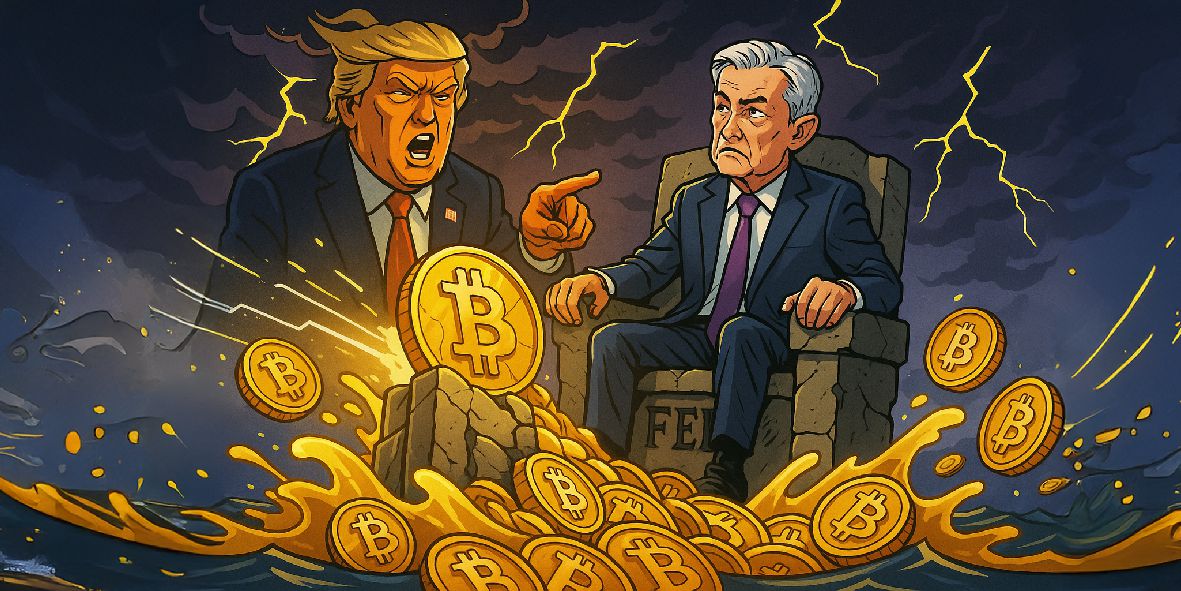Key Notes:
- Bitcoin (BTC) rebounded 16% from April lows to over $87,600.
- Bitcoin ETFs recorded $15.85M in net inflows after two weeks of outflows.
- Public companies now hold 688,000 BTC, 3.28% of the total supply.
Bitcoin ETF Flows Bounce Back
After two weeks of heavy redemptions, BTC ETFs are seeing inflows again. According to SoSoValue, 12 U.S.-listed BTC ETFs brought in $15.85 million last week, ending a two-week streak that drained nearly $886 million from funds.
Most of the inflows went to BlackRock’s IBIT ($186.5M) and Bitwise’s BITB ($23.8M), while Fidelity’s FBTC and ARK’s ARKB posted notable outflows.
Meanwhile, investor sentiment remains fragile. CoinShares data shows crypto products have seen $7.2 billion in outflows since February, nearly wiping out 2025’s gains. Nevertheless, last week’s inflows suggest cautious optimism may be returning.
Trump-Powell Tensions Stir Market Volatility
Political drama also shook markets last week. Fed Chair Powell warned that Trump’s proposed tariffs could raise inflation and delay rate cuts, triggering ETF outflows. However, Trump fired back, saying Powell’s “termination can’t come fast enough,” with reports suggesting he may consider replacing him with Kevin Warsh, a former Fed governor known for pro-crypto views.
As a result, BTC sharply rebounded, surging 16% from April lows and climbing back above $87,600 by April 21 — its highest level since March 28.
Dollar Drops, Bitcoin Gains
At the same time, BTC’s rally mirrored growing weakness in the U.S. dollar. The Dollar Index (DXY) has fallen over 5% in the past month, reaching its lowest level since January 2024, according to MarketWatch. National Economic Council Director Kevin Hassett confirmed that Trump is exploring Powell’s dismissal, fueling fears over the Fed’s independence.
Global Liquidity Still Drives Bitcoin
Looking further ahead, Bitcoin’s long-term trend remains closely tied to global liquidity. Colin Talks Crypto highlights a strong correlation between BTC’s price and the global M2 money supply.
When central banks engage in Quantitative Easing (QE), they expand liquidity, often boosting Bitcoin. Conversely, Quantitative Tightening (QT) shrinks liquidity, usually pressuring BTC’s upside.
Thus, central bank policies and liquidity expansion could play a crucial role in BTC’s future moves.
Institutions Quietly Accumulate BTC
Meanwhile, institutional interest is quietly hitting new highs. According to Bitwise’s Q1 2025 report, publicly traded companies now hold 688,000 BTC, or 3.28% of Bitcoin’s supply, a record high. This marks a 16.1% increase from the previous quarter.
Bitwise CEO Hunter Horsley stated:
Bitcoin’s fundamentals are strengthening. ETF inflows have returned, institutions are stacking, and political tensions are tilting momentum in Bitcoin’s favor. For now, while volatility remains, the smart money appears to be positioning early for Bitcoin’s next major move.







